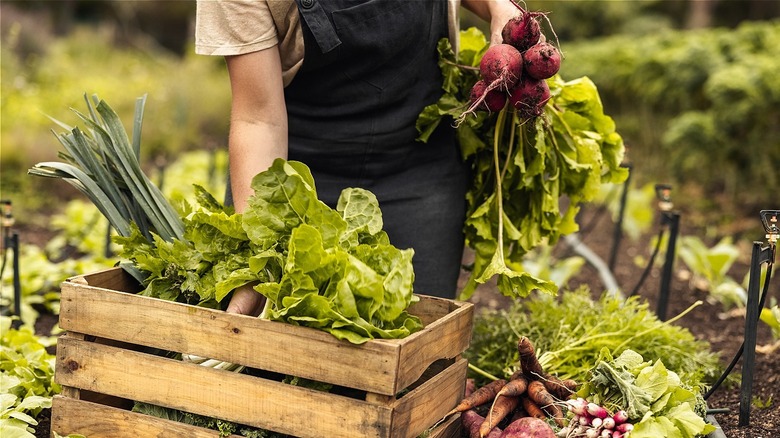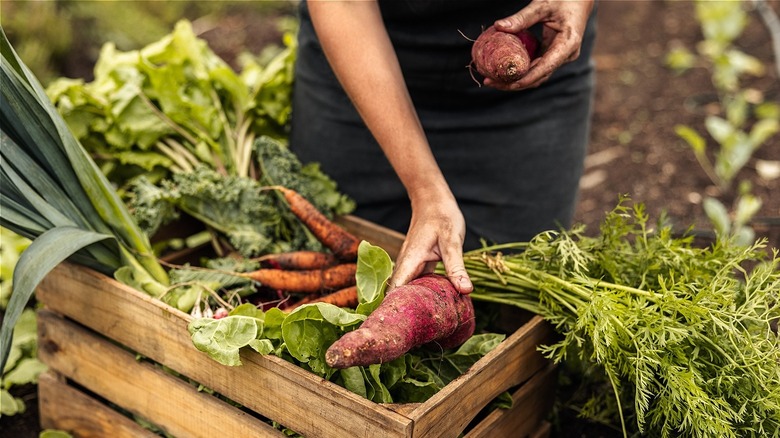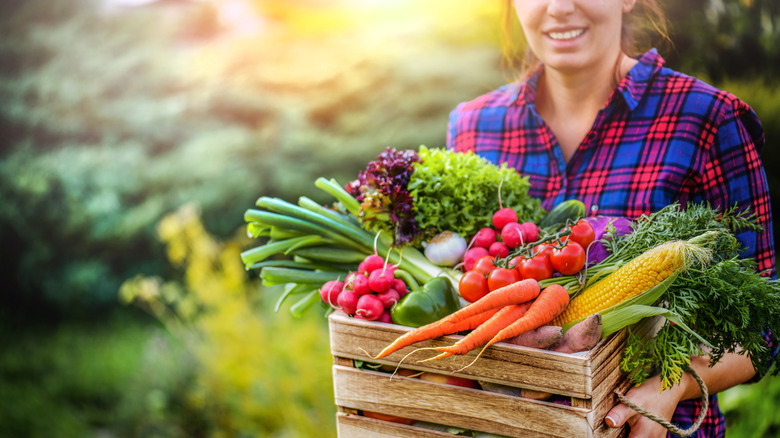Is Growing Your Own Food Really A Solution To Rising Food Costs?
If you've wandered through your local produce department lately, you were likely shocked by the jaw-dropping prices of common vegetables. What used to be staples — carrots, lettuce, and tomatoes — are now outlandishly expensive. Healthy eating shouldn't be a luxury, but thanks to steep price hikes, that is quickly becoming the new reality.
No one wants to have to take out a second mortgage just to keep their crisper stocked, but just one head of cauliflower and decent-sized spaghetti squash can almost break the bank. You can't bring yourself to subsist on white bread, noodles, and Spam. And the thought of canned mushy peas and waterlogged carrots leaves you feeling unimpressed. There must be a way to ensure that you and your family have access to fresh fruits and veggies without having to sell the good silverware.
You may be tempted to tap into your inner farmer and grow some greens of your own. Before you do, however, there are some things to consider.
The first year of gardening is always the most expensive
It is important to begin by realizing just how much work planting and tending to a veggie garden can be if you've never gardened before. If you hate dirt, leap into a screaming fit at the sight of bugs, or find it hard to be on your hands and knees for any length of time, you may want to reconsider — or go shopping for some solutions, which can get expensive.
However, home contractor Skip Bedell visited with "Fox & Friends Weekend" and explained that a raised garden saves bending and backache. He added that some brands like Vegepod even have variations that come with wheels (via Fox News). Raised gardening still means that you will have to invest in soil. The Vancouver Sun warns, "If you have to bring in soil, build boxes, and buy gardening tools and gloves, it's shockingly easy to spend hundreds." On the upside, most of these things are one-time purchases.
If you opt to grow your own vegetables from seed, there are some varieties that you may need to start indoors. And, if you don't have enough sunlight, you may need to invest in a sun lamp. Even if you purchase pre-grown plants at a nursery, the bill will likely come as a shock. Herb and vegetable plants are not cheap.
And then there's the wait. Get ready to do some toe-tapping and thumb-twiddling while you anticipate the fruits of your labors.
You can save money if you plant the right veggies
According to Your Homestead Journey, quick growers like lettuce and green beans take about 70 days, while the dawdling pepper or carrot can take up to four months. Those green thumbs will be well-twiddled by then. Not to mention that damaging weather or a deluge of leaf-eating insects can wreak havoc on your yield. Now that you are fully aware of the costs and risks associated with home gardening, it's important to look at the other side: the benefits.
Greenhouse Today says that a single tomato plant can produce roughly "10 to 30 pounds of tomatoes." That's a lot of tomato sauce. So, even if the initial outlay for an heirloom tomato plant seems steep, it has the potential to yield an ample supply of expensive produce. If you enjoy herbs, growing them yourself can save you money, as they are costly to buy (via Investopedia). The Vancouver Sun adds that zucchini will give you a great return with each seed package producing "hundreds of kilos of fruit." And, remember, next year you won't have to buy raised planters, tools, or gloves. You will likely only need to add nutrients to your soil.
With everyone predicting that food price increases are about to get even worse, you may find that your home garden will pay off sooner than you think. Or you could just head to your local farmers' market.


